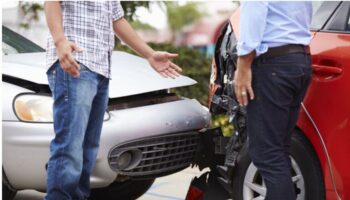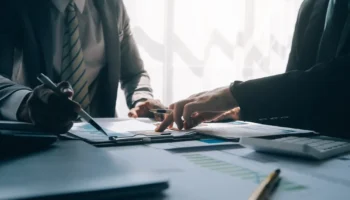Navigating the aftermath of a serious accident can feel confusing, especially when insurance adjusters call before you’ve had time to process what happened. Yonkers residents often face medical appointments, missed work, and rising bills all at once, and choosing the right legal steps early can make a measurable difference. A Personal Injury Attorney Yonkers residents trust can explain your timeline, outline what evidence matters most, and manage communications so you don’t compromise your claim. Local firms knowledgeable about Westchester procedures and courts bring strategies tailored to traffic collisions, construction injuries, and unsafe property conditions. With experienced counsel such as Fellows Hymowitz Rice, clients gain structured guidance from the first conversation through settlement or trial. This article breaks down how attorneys approach claims, gather proof, coordinate experts, negotiate with insurers, and advocate in court to help you move forward with more clarity.
How Yonkers Attorneys Handle Accident and Negligence Claims
In Yonkers, accident claims often involve motor vehicle collisions, pedestrian knockdowns, construction site incidents, and injuries caused by unsafe property conditions. Attorneys start by identifying the theory of liability—who owed a duty, how that duty was breached, and how the breach caused your injuries. New York’s comparative negligence rule may apportion fault among multiple parties, so early strategy must anticipate defense arguments and preserve favorable facts. A Personal Injury Attorney Yonkers residents call first will also look at insurance coverage layers, including primary, umbrella, and potential third-party policies. From day one, the focus centers on documentation, timelines, and evidence preservation that withstands scrutiny.
From intake to strategy: the first 30–60 days
Early work includes gathering police reports, incident logs, photos, surveillance footage, and witness statements while memories remain fresh. Lawyers send preservation letters to stop video deletion, request vehicle data, and secure maintenance and inspection records where premises or equipment are involved. In workplace incidents, counsel distinguishes between workers’ compensation claims and separate negligence claims against non-employer third parties. For traffic collisions, attorneys may deploy accident reconstruction methods or consult human factors experts if visibility, signage, or speed is contested. Each action serves a single aim: align the facts, injuries, and coverage to frame a credible and complete demand.
Premises cases in Yonkers often turn on notice—did the property owner know or should they have known about the hazard, and did they have a reasonable chance to fix it? Lawyers work to establish patterns of neglect through cleaning logs, prior complaints, or code violations, and to link these records to the moment you fell or were struck. Municipal claims, such as those involving city sidewalks or public transit, come with added steps, including notices of claim and shorter deadlines. Because of these nuances, attorneys familiar with Westchester County procedures know how to file in the proper venue and navigate local rules. With a seasoned team coordinating the moving parts, you avoid pitfalls that can shrink or sink a claim.
The Process of Filing and Managing Personal Injury Lawsuits
If pre-suit negotiations don’t fairly value your losses, counsel moves to file a lawsuit, beginning with a summons and complaint that states your claims and requested relief. Venue selection matters; many Yonkers cases are filed in Westchester Supreme Court, where scheduling practices and judicial preferences influence pacing. Filing is time-sensitive because of New York’s statute of limitations, and municipal defendants may require an early notice of claim. A Personal Injury Attorney Yonkers residents retain will track every deadline and coordinate service on all defendants to avoid dismissals on technical grounds. Clear pleading, naming all necessary parties, sets the stage for organized discovery and leverage.
What to expect after the complaint
Once the case is underway, both sides exchange information through discovery, including written questions, document demands, and sworn depositions. You may attend an independent medical examination arranged by the defense, so your lawyer prepares you on what to expect and what to avoid saying. Discovery also surfaces disputes—perhaps over missing maintenance logs or contested video—which can lead to motions to compel or for protective orders. Settlement conferences frequently occur during this phase, giving both sides a reality check on strengths and weaknesses. Mediation can be particularly useful when liability is clear but damages are debated.
Active case management keeps momentum. Lawyers use scheduling orders to plan depositions of key witnesses, from drivers and site supervisors to treating doctors. They also map out expert disclosures, ensuring the foundation exists for later expert testimony on liability and damages. Firms with refined systems create litigation budgets and communication intervals so you know what’s next and why. Structured planning, as seen in practices like Fellows Hymowitz Rice, helps translate complex steps into understandable milestones.
Building Strong Cases With Expert Witness Testimony
Expert witnesses can transform a disputed claim into a persuasive narrative that jurors and adjusters understand. In collision cases, reconstruction experts analyze crush damage, skid marks, and event data recorder downloads to explain speed, braking, and angles of impact. Construction incidents may require safety engineers to interpret OSHA standards and site protocols that were breached. Medical specialists connect trauma to symptoms, detail the necessity of procedures, and explain why pain persists despite treatment. A Personal Injury Attorney Yonkers clients rely on knows which experts add clarity and when to deploy them.
Types of experts that move the needle
On damages, economists and vocational experts quantify wage loss and future earning capacity, while life-care planners map out long-term needs—from home modifications to attendant care. These projections, discounted to present value, help fact-finders understand the true cost of a permanent injury. Attorneys prepare experts by assembling a clean record: diagnostic imaging, operative reports, therapy notes, and before-and-after statements from family or coworkers. They also preempt defense attacks by addressing preexisting conditions or gaps in treatment head-on. The result is a cohesive story where proof of injury dovetails with proof of liability.
New York courts scrutinize scientific evidence under standards that demand reliability and relevance to the facts at hand. Effective trial teams craft demonstratives—timelines, anatomical models, and animations—that simplify complex testimony without overstating it. They comply with CPLR 3101(d) expert disclosures and anticipate cross-examination themes to avoid surprises. In many Westchester cases, this disciplined approach—common in offices like Fellows Hymowitz Rice—helps shift negotiations, prompting serious offers before trial. Careful expert coordination is often the difference between a modest settlement and full, well-documented compensation.
Insurance Negotiation and Court Representation Explained
Insurers are not neutral; they are incentivized to limit payouts, and their early outreach often aims to lock down statements and minimize exposure. Attorneys counter by taking over all communications, submitting a comprehensive demand only after the medical picture stabilizes or when liability leverage is strong. In New York auto cases, counsel navigates No-Fault benefits and the serious injury threshold, ensuring medical documentation supports categories recognized by statute. Uninsured and underinsured motorist claims are evaluated alongside liability coverage to identify every available dollar. A Personal Injury Attorney Yonkers residents trust will also analyze policy limits, exclusions, and reservations of rights letters to forecast negotiation range.
From negotiation table to the courtroom
Negotiation is a craft grounded in facts: liability narratives, treatment chronology, objective imaging, and clear economic losses presented in a concise package. Lawyers often “bracket” or “anchor” demands to realistic verdict ranges, adjusted for comparative fault risks. Mediation can help break impasses, and creative tools—like high-low agreements—can reduce uncertainty while preserving the chance at a favorable verdict. When carriers deny or delay, targeted motions and trial readiness dates apply pressure. Every step signals resolve and readiness to try the case if needed.
If settlement fails, courtroom advocacy takes center stage: juror selection to detect bias, focused openings that preview proof without overpromising, and direct examinations that let credible witnesses do the heavy lifting. Cross-examination hones in on inconsistencies, alternative explanations, and financial motivations of defense experts. Motions in limine shape what the jury hears, while verdict forms guide jurors through liability and damages questions methodically. In Westchester courthouses, experienced trial lawyers—like the litigators at Fellows Hymowitz Rice—blend local insight with disciplined presentation to protect the record for post-trial motions and appeal. This continuum from negotiation to verdict keeps your interests front and center at every stage.
Why Experienced Lawyers Improve Recovery Prospects
Experience changes outcomes because seasoned attorneys spot issues early, price risk accurately, and avoid avoidable mistakes that erode value. They understand how adjusters assess files and what triggers authority increases, so the right documents hit the insurer’s desk at the right time. Veterans also know when to litigate, when to mediate, and when to wait for additional treatment to mature the medical story. Clients benefit from clear expectations about timeline and value, which reduces stress and prevents costly missteps. In short, the best predictor of success is often a disciplined process executed by a team that has seen your fact pattern before.
Practical advantages you can feel
Beyond pure advocacy, an experienced team manages healthcare liens and subrogation issues—Medicare, Medicaid, ERISA plans—so net recovery isn’t undercut after settlement. They coordinate specialists, help schedule independent evaluations, and advise on keeping treatment consistent with documented symptoms. Transparent fee structures and the contingency fee model align incentives: the firm only gets paid when you do, and you get progress updates at each milestone. A Personal Injury Attorney Yonkers families refer to peers tends to have strong local networks, from medical providers to investigators, accelerating case development. These practical advantages show up in both financial results and peace of mind.
Proactive representation also protects evidence that can vanish—digital video overwritten in days, vehicles repaired before inspection, or spill logs quietly updated. Attorneys move quickly with preservation letters, site inspections, and witness outreach to safeguard the strongest version of your case. They leverage expert networks to firm up causation and forecast future costs, which is critical when injuries linger or worsen. As negotiations start, battle-tested lawyers press carriers with data-backed valuations and are fully prepared to try the case if offers lag behind proof. With firms like Fellows Hymowitz Rice guiding strategy from the outset, injured Yonkers residents can pursue their claims with confidence, knowing every angle—from liability to damages to coverage—has been accounted for.






